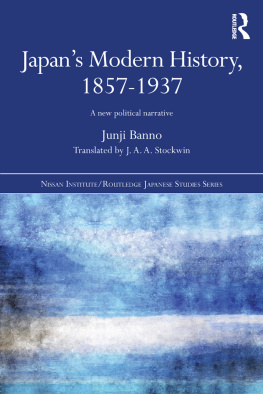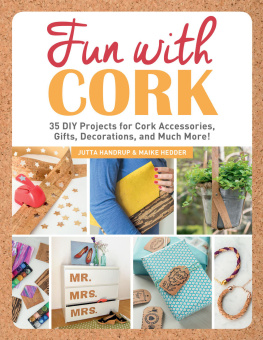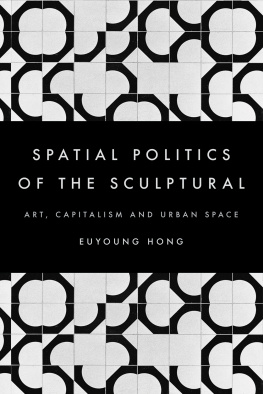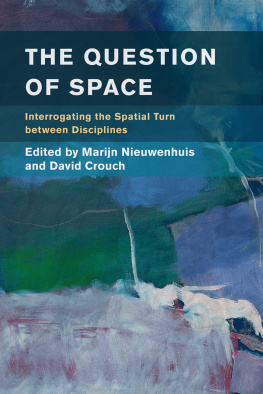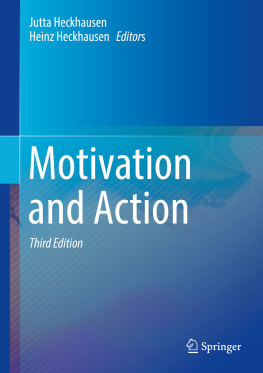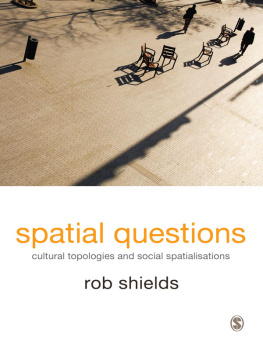Jutta Vinzent
From Space in Modern Art to a Spatial Art History
SpatioTemporality / RaumZeitlichkeit
Practices-Concepts-Media / Praktiken - Konzepte - Medien
Edited by
Sebastian Dorsch
Brbel Frischmann
Holt Meyer
Susanne Rau
Sabine Schmolinsky
Katharina Waldner
Volume
Jutta Vinzent
From Space in Modern Art to a Spatial Art History
Reassessing Constructivism through the Publication "Circle" (1937)
ISBN 9783110594935
e-ISBN (PDF) 9783110595338
e-ISBN (EPUB) 9783110592733
Bibliographic information published by the Deutsche Nationalbibliothek
The Deutsche Nationalbibliothek lists this publication in the Deutsche Nationalbibliografie; detailed bibliographic data are available on the Internet at http://dnb.dnb.de.
2020 Walter de Gruyter GmbH, Berlin/Boston
bersicht
Contents
Acknowledgements
Most of this book was written during a Fellowship at the Max Weber Centre at Erfurt, and I am very grateful not only for its financial support, but also for its outstanding research community culture consisting of research seminars and investigative, constructive thinkers without which crucial aspects of this book, particularly regarding the methodology, would have been impossible to develop. In Erfurt, I have further benefited from the Erfurt Spatio-Temporal Studies (https://www.uni-erfurt.de/philosophische-fakultaet/raumzeit-forschung/), with which I was able to convene three workshops on spatio-temporality together with Dr. Sebastian Dorsch. This research has been published as edited books titled Performing Bodies and SpatioTemporalities on the Line, the latter in the same series as this book appears, namely the series of the study centre concentrating on Spatio-Temporal Studies. This study centre has also provided financial support without which this book would have not been able to get in print.
I am also indebted to my students at the University of Birmingham, as the idea to this book crystallised when designing and teaching the introductory module Modernism, where very able students inspired me with their own divers and exciting work. I am also grateful to my former PhD students, particularly Dr Richenda Roberts, who read parts of this book, and Dr. Imogen Wiltshire, who enlightened me in view of Latour. Towards the end of writing this book, I received invaluable insights and constructive feedback from my colleagues at the University of Birmingham, particularly Dr. Sophie Hatchwell and Professor Sara Jones. I am also grateful to the anonymous peer-reviewer of the series in which this book appears, to Linda Finnigan for proof-reading the final manuscript and to the editors at DeGruyter.
All began with a paper written for a symposium on Gabo and emigration organised by Tate Research in 2009. The paper formed the nucleus of the book. Parts of chapters were tried out at conferences. I participated in a session at the 2012 conference of the College Art Association (CAA) with a paper published as Challenging the Abstract in Late 1930s Britain that forms now part of the third chapter. A further one was based around the string sculptures by Gabo, Hepworth and Moore, now analysed with new insights, also in the third chapter. Despite having been occupied with and published on the topic of space for nearly ten years, this book is new in light of its proposed and probed methodology unavailable in any of the other publications. It should not be concluded from this that the book is comprehensive it should be rather understood as a stepping stone for further discussions.
Introduction: Circle, Space and a Spatial Art History
This book focuses on spatial theories and practices in the first half of the twentieth century. Taking the richly illustrated publication Circle edited by Naum Gabo, Ben Nicholson and Leslie Martin with written contributions from Marcel Breuer, Le Corbusier, Maxwell Fry, Sigfried Giedion, Piet Mondrian, Henry Moore, Lszl Moholy-Nagy, Herbert Read and Jan Tschichold as a springboard for avant-garde views on space, it argues that spatial theories and practices played a significant role in modernism, particularly in constructive and constructivist art. On the basis of such theories and practices that have been developed against a space understood as closed to resist a Kantian a priori idea of space, and in combination with recent theories which conceive of space as neither simply geography nor an empty container but as being produced by subjects (Henri Lefebvre, Edward Soja and the Spatial Turn), the book suggests and probes a new methodology termed Spatial Art History that takes into account constructive and social aspects in the analysis of things, defined in the widest sense as anything that can be exchanged, including art objects and written material. It thereby understands the relationship between things and social life (in the form of relationships) as correlative and reciprocal, producing each other. The methodology is further enriched by (actor) network theories that understand not only the relationships between things and the social as associations, but assume things are related to other things in a network. Things and human beings are actors. It thereby does not understand networks primarily as a challenge to notions of placing art works geographically and politically as fixed, such as for example, brought forward by Thomas Dacosta Kaufmanns influential book Toward a Geography of Art (2004), but rather as a way of describing how art works, ideas and human beings are related to each other, namely by associations that are assumed as infinite. Inspired by Bruno Latour, these associations are characterised by a distancing, by a spacing of things to each other (rather than a placing) and of things in relation to people, being further away or closer to each other, denser or lighter, critiquing strict linearity, originality and one-dimensionality that accepts only cause-effect relationships and assumes of originality as singularity. In view of artists and artworks, this means that the methodology does not conceive of the artist as genius who directs materials and objects without the assumption of their transformation, nor of art works which determine all possibilities of the artist, nor of artists who imagine an artwork ready to be and then create without considering the possibility of processual changes. Hence this books methodology focuses on the exchange of ideas of space in writing, the circulation and dissemination through publications, and the relationships between art works and producers (both as artists and as viewers of art works). As the title suggests, this introduction begins with a literature review on space in modern art (as a concept) and moves on to developing a Spatial Art History. Therefore, if the readers are primarily interested in the spatial methodology, they should skip chapter parts 1.1 and 1.2, sections which have been written particularly for those interested in Constructivism and the publication Circle, and continue reading sections 1.3 (especially the part titled correlative and volumised) and 4.1.
1.1 Significance and Aims in View of Constructivism and


